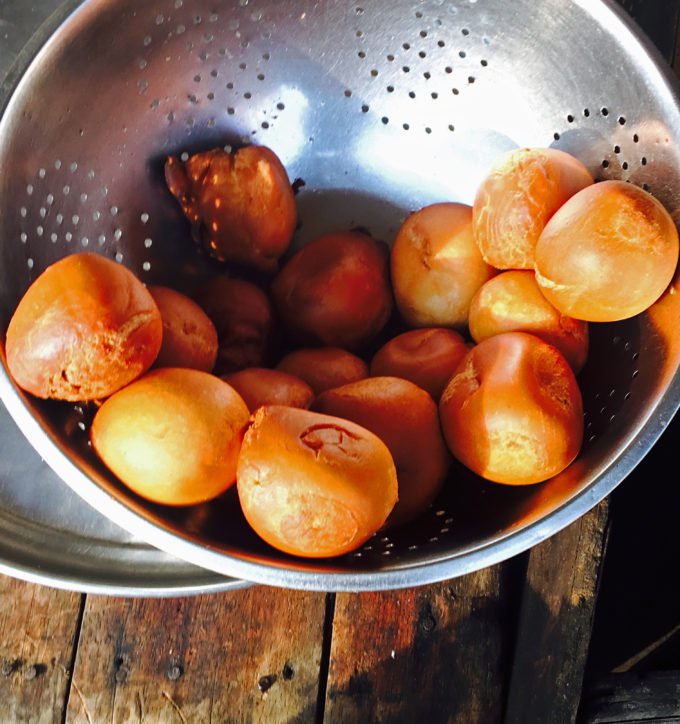
The Breakfast Staple That Transcends All Borders
Bofrot in Accra
Across Africa and its diaspora, certain recipes and techniques stretch across borders. The most famous diasporic staple is likely West Africa’s okra stew, which shares similarities with New Orleans’ gumbo and caruru in Brazil’s Bahia, the hub of the Afro-Brazilian culture. But less well-noted are African and diasporic variations of fritters.
Louisiana has its beignets. Kenya, its mandazi. In Ghana, the fried dough of choice is bofrot, also called togbei, or “goat’s balls” in Ga, the language of one of the ethnic groups native to the Accra region.
Each morning, in the congested Accra traffic, street vendors weave in and out of the treacherous maze of cars selling on-the-go snacks. Boxes filled with bofrot and other pastries are balanced precariously on their heads. Drivers and passengers crammed in trotros, the local form of public transport, dive into their pockets in search of a few coins to exchange with hawkers before traffic begins moving again.
But you can’t get your bofrot from just anyone. A tried-and-true bofrot connoisseur, I find the bofrot sold on the street to be soggy after sitting too long. I prefer to purchase mine from a lovely lady named Ama, who starts deep frying the delicious round doughnuts each morning in Osu, Accra’s hustling, bustling “Times Square.” By now, Ama and I have a steady rhythm. Rolling down the car window in the morning, I’m always greeted with a warm smile and a raspy voice saying “εte sεn? One cedi?”
For the equivalent of twenty-five cents, I get two warm bofrot. Not the healthiest of foods, I (regretfully) indulge sparingly, just two or three times a week. While a popular breakfast snack, alongside other popular go-to’s like kooko (maize porridge) or kye bom (fried egg and bread), bofrot is also a staple at parties and weddings. As a sweet finger-food, it stands out in a culture dominated by salty and savory dishes.
Some Ghanaian friends tell me that traditionalists use palm wine in place of yeast, which gives it a distinctive taste. An uncle with a sweet tooth advises rolling the bofrot in powdered sugar to make it sweeter. As I perform my own gastronomic experiments at home, I dip the bofrot in a passion fruit glaze and delight in the sweet-and-tart taste.
Growing up, I was accustomed to bofrot’s Kenyan cousin, mandazi, which often features coconut milk and spices like ginger and cardamom and is frequently cut into triangles. Mandazi is more dense, with a consistency similar to cake rather than a beignet. Less sweet than bofrot, mandazi are often served with chai tea, a nod to Kenya’s fusion of Indian and African culture.
Different regions call for twists that alter the texture and taste, but the core components to diasporic dough always follow the simple formula: flour, yeast, sugar, water. The omnipresence of such a simple snack across the globe ensures that a piece of home is never too far away. A Kenyan-American in Ghana, my bi-weekly trip to Ama’s bofrot stand cures even the worst bout of homesickness.